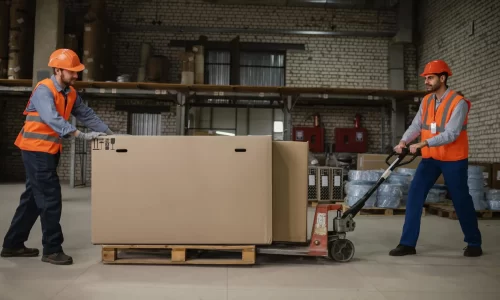Manual Handling
Manual handling training is a crucial aspect of workplace safety. It aims to equip employees with the knowledge and practical skills to safely lift, carry, and move objects, thus minimising the risk of musculoskeletal disorders. Regulations necessitate that employers assess and mitigate manual handling risks, and while specific training isn’t always mandatory for all, providing adequate information and instruction is. Training typically covers risk assessment, proper lifting techniques, and the use of handling aids, helping to create a safer work environment and reduce workplace injuries.

Level 2 Award in Principles of Manual Handling
This course is tailored for all staff, focusing on highlighting the dangers of improper manual handling. It’s particularly beneficial for individuals regularly involved in tasks like receiving deliveries or moving packages and boxes, providing them with essential safety knowledge.

Level 2 Award in Safe Moving and Handling
This nationally recognised and regulated qualification is designed for anyone working, or planning to work, in roles requiring manual handling. It’s particularly suited to those in diverse settings like warehouses and retail shops, providing essential, standardised training.
Manual Handling
What is manual handling training?
This training teaches safe techniques for lifting, carrying, pushing, and pulling objects to prevent injuries.
Why is manual handling training important?
It reduces the risk of musculoskeletal disorders (MSDs), which are common workplace injuries. It also improves overall safety and well-being.
Who needs manual handling training?
Anyone whose job involves lifting, carrying, pushing, or pulling objects, regardless of the weight or frequency.
How often should I renew my manual handling training?
Typically, refresher training is recommended every 1-3 years, but it can depend on industry regulations and risk assessments.
What topics are covered in manual handling training?
Common topics include risk assessment, biomechanics, safe lifting techniques, posture, and using handling aids.
What are the benefits of manual handling training for employers?
Reduced workplace injuries, decreased absenteeism, improved productivity, and compliance with legal requirements.
What are the benefits of manual handling training for employees?
Increased awareness of safe practices, reduced risk of injury, and improved overall health and well-being.